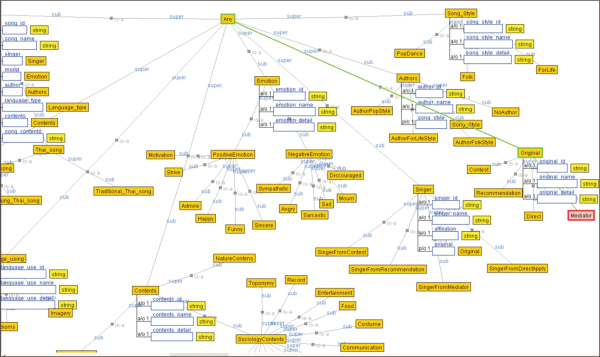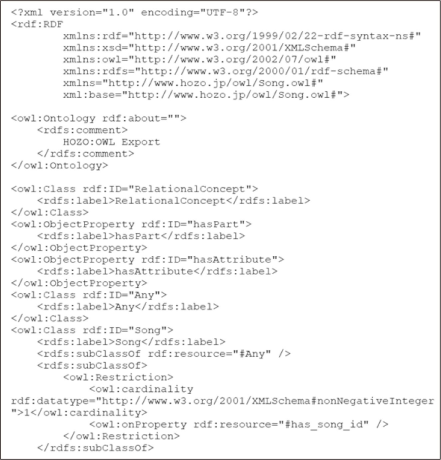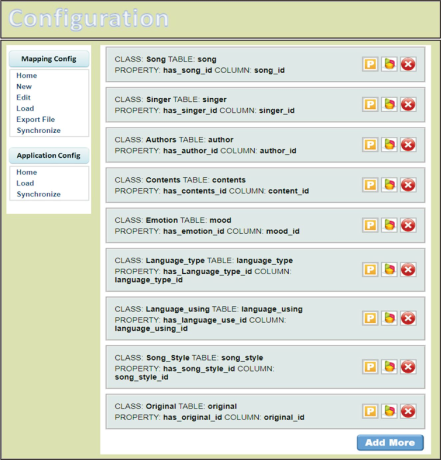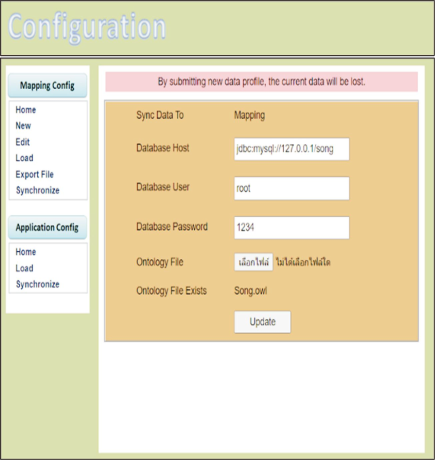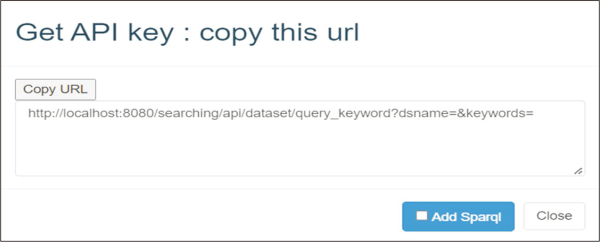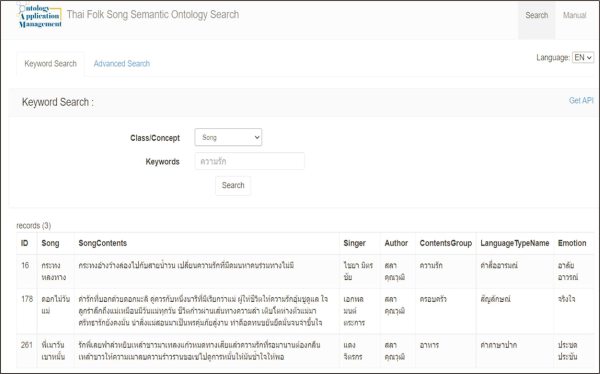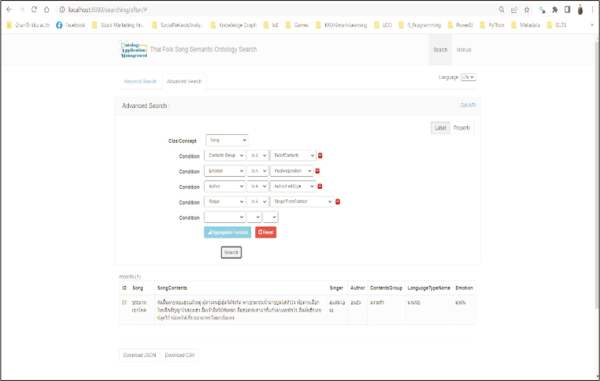1. INTRODUCTION
The Thai country song tradition or Phleng Luk thung is considered a Thai cultural heritage information resource. The music contains key messages regarding the evolution of the country and wisdom in each era (Sirisamphan & Virulrak, 2010). Thai country songs are an intangible cultural heritage retelling various stories. The music portrays knowledge of culture, community, values, and narratives. Moreover, Thai country songs play an important role in preserving culture (UNESCO, 2016) and also vividly reflect particular ways of life and traditions of people through simple language. The music delivers messages and moods such as love, sorrow, joy, pride, courage, or happiness to listeners directly and impactfully. Therefore, the Thai country song tradition is well known to everyone (Khuajaroen, 2014; Srinok, 2010; Thanasilangkun, 2001).
Rapid technological change makes it more accessible for people to listen to music through digital formats (Kongsomsawaeng et al., 2021); for instance, people often listen to music through streaming services such as Spotify, Deezer, JOOX, LINE MUSIC, Apple Music, and YouTube Music (Viklin, 2023). This has led to a major rise in popularity of Thai country music, created with various melodies, lyrics, and styles. The key messages of the music have been illustrated in terms of society, culture, religion, traditions, rituals, ways of life, love, loneliness, work life, localization, and courage (Chaichana, 2016; Kentorrapak, 2021; Powell, 2022). Recently, people tend to listen to Thai country songs increasingly through digital platforms: Facebook, YouTube, and websites. They often search for music from keywords, for instance, title, singer, songwriter, and some parts of lyrics; yet this might lead to inaccurate and insufficient retrieval for people to get the right songs they search for, since the information is not interconnected. As a result, people might need to search on many platforms, and it might take time to find a single song to listen to; therefore, a Semantic Web or information networking system could assist users in getting information faster and more conveniently. Therefore, digital preservation is a research trend in the digital humanities domain (Chansanam et al., 2022).
The purpose of this study was to work on developing an ontology for Thai country songs. In this study, a synthetic separation method was used to analyze and classify the content of modern Thai country songs. The knowledge structure needed for this study was collected to understand contemporary Thai country songs better. Ontology is an alternative knowledge-based platform that shows a concept’s scope and categorizes scattering data into an ontology (Antoniou & van Harmelen, 2004). The researchers acknowledged the insufficiency regarding Thai country song retrieval; consequently, an ontology is needed to provide precise keywords, semantics, properties, characteristics, and relationships of all related Thai country song concepts. Therefore, ontology development is related to the semantic tools that facilitate users’ searches for needed information. Furthermore, the researchers employ the Hozo-Ontology Editor program to develop the Thai country song ontology, and the Ontology Application Management (OAM) Framework to develop a Semantic Web to store the developed ontology and allow users to access all Thai country song information.
2. LITERATURE REVIEW
There has been a trend of listening to Thai country music and mixing Thai country songs with new rhythmic music. With the advancement of technology and the digital age, Thais are becoming more interested in listening to country music from the old cassette tape era and moving to the CD or DVD era (Kongsomsawaeng et al., 2021). Music can be listened to more easily from online media, especially the YouTube website, resulting in a new type of Thai country song called contemporary Thai country songs, which are published during the present period and can reflect the way of life, ideological conditions, and Thai culture through their current content. A combination of country, local, folk, and life songs have emerged (Kentorrapak, 2021). As a result, Thai country songs have a variety of contents, pique the interest of scholars from various fields, and lead to different views on Thai country songs as follows: the use of language, overlapping words, double words in foreign languages, and the number of rhetorical images used by the content of Thai country songs for the benefit of dictionaries, vocabulary lists, and taxonomies (Chutapanish, 2004).
Scholars in the mass communication field have looked at Thai country music; their content is about creating artists, production processes, singers, and communication strategies, by applying the contents of Thai country songs for the benefit of information dissemination and public relations for better practical results (Tohombut, 2015). Thai country songs are believed to be an intermediary for conveying political concepts of the time, social criticisms, parody, and satire. The contents of Thai country songs have been used for the purpose of communicating government policies (Fyeted, 2005). Thai studies scholars have thought that Thai country songs have different kinds of content, such as social history, language, and culture, and that the songs’ content helps people understand Thai society and culture and contributes to Thai society’s creation (Yaikoom, 2004). Therefore, Thai country songs can reflect beliefs about merit, sin, karma, hell, heaven, and doctrines. Thai country songs can serve as a guideline for living a good life by adhering to Buddhist teachings and cultivating desirable morals and ethics for youth in educational institutions (Srinok, 2010). In information science, it is clear that Thai country songs are a type of information resource that contains a variety of content about life, culture, and society, and Luk thung is a medium used to convey meaning to listeners so that they understand the contents that appear (Kabmala, 2020). Thai country songs, according to historians, are a record of the society’s history at the time. Scholars use their knowledge of Thai country songs to study history based on historical events (Krobthong, 1998).
Knowledge organization serves as a foundation of knowledge structure development and ontology development, which contributes to effective information searching and access to knowledge. Apart from studies for cultural knowledge organization, there exists an approach to cultural information management, referred to as digital humanities research. Ontology provides a fundamental framework for the development of the Semantic Web. A knowledge organization system is the key element of knowledge engineering (Bouihi & Bahaj, 2019; Broughton et al., 2005; Tuamsuk et al., 2018a). Knowledge organization, ontology development, and semantic search development are interrelated approaches. In the development of semantic search, its basic data is derived from the data structure design with ontology. Still, ontology development requires analyzing and synthesizing data and knowledge about a particular topic, as well as determining the concepts and relations of knowledge systematically (Noy & McGuinness, 2001).
An ontology is a commonly used tool to explain the representation of knowledge. The advantages of an ontology include its interoperability to share a common understanding among people or software agents, enabling the reuse of domain knowledge and facilitating explicit conventions (Chansanam et al., 2021). We have adapted some of the data from previous ontologies to fit the scope of this study. Ontologies can be shared between applications or reused because an ontology is the keyword source used to describe domain concepts. The ontology can copy the knowledge base and use it in new applications. There may be an improvement in the structure or the addition of more knowledge (Gašević et al., 2009; Tuamsuk et al., 2018b).
Here contemporary music content is analyzed and classified into various aspects of Thai country music content, so that all fields of study can be used appropriately. From the academic point of view, scholars in each field of study use contemporary Thai country song content differently according to their intended use, and the importance of Thai country song content varies in terms of subject areas. Therefore, we studied the content analysis and classification of contemporary Thai country songs using ontology techniques.
3. METHODS
3.1. Ontology Development Process
The study employed seven steps of ontology development from Noy and McGuinness (2001) as follows:
3.1.1. Determine Scope
This study determined the scope of song, singer, emotion, author, language used, language type, song style, original, and content.
3.1.2. Consider Reuse
This study employed concepts in ontology development to create a prototype of a semantic website containing Thai country song information since the music has been launched on websites.
3.1.3. Enumerate Terms and Properties
The study listed the terms and properties of each class as in Table 1.
3.1.4. Define Class
There are nine classes, namely song, singer, emotion, author, language used (word choices, stylistic devices, idioms), language type (pronouns, time, settings, dialects, connotation, foreign language, compound, figurative language, reduplication, colloquial, trendy words, emotion words, synonym, rhetorical questions, paradox, symbol, onomatope, hyperbole, synesthesia, analogy, simile, metaphor, modern idioms, old idioms, metonymy, personification, allusion), song style (pop, dance-pop, Phleng phuea chiwit or Thai country song), originality (contests, recommendations, digital platforms, own debuts), and content (society, beliefs, nature). The details of the nine classes are presented for each class in Table 2.
3.2. Application of the Thai Country Song Ontology to a Semantic Web
According to the ontology development process, the researchers gathered information regarding Thai country songs from related resources: 1) the Office of Information Technology Administration for Educational Development ( http://tdc.thailis.or.th/tdc) (Office of Information Technology Administration for Educational Development: UniNet, 2000); 2) Thai Journals Online ( https://www.tci-thaijo.org) (Thailand Research Fund, King Mongkut’s University of Technology Thonburi, Thammasat University, National Electronics and Computer Technology Center, Thai-Journal Citation Index Centre, 2001); and 3) Thai country songs released between 2008 and 2020. This information was gathered as part of the Semantic Web development. The researchers used the OAM Framework as a primary program to apply all data from the ontology since this program could take RDF and OWL from publishing and the developed databases, as shown in Fig. 1 (Buranarach, 2017). The researchers only mapped existing data with the developed ontology by importing the .owl file from the ontology and data from MySQL to the application template; moreover, the researchers coordinated with APIs & Web Service to make the Semantic Web compatible with other search engines (Buranarach et al., 2013) to reduce the complexity of program development.
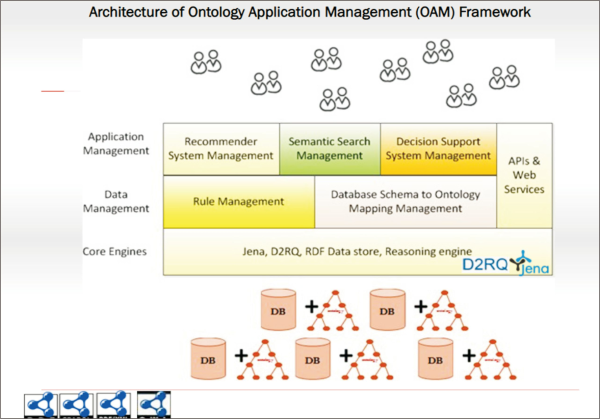
Development of a Semantic Web using Ontology Application Management (OAM) Framework. Source: Buranarach, 2017.
Regarding keyword entry and results, the researchers developed a web application with Java where users can search and get all the information through Web API. The web application will send the information to the Semantic Web of the OAM Framework and show the search results via the web application.
4. FINDINGS
4.1. Ontology Development
The data on Thai country songs were collected from three sources: ThaiLIS, ThaiJO, and all songs released between 2008 and 2020. The researchers analyzed and developed an ontology consisting of nine classes: song, singer, emotion, author, language used, language type, song style, originality, and content. Then, the knowledge structure in Fig. 2 was developed using HoZo-Ontology Editor (Kozaki et al., 2002).
4.2. Semantic Web Development
After the ontology development, the data was converted to OWL format, as in Fig. 3.
The researchers created a MySQL database to store the data. Then, the OAM Framework was used to link the data from MySQL with the data from the ontology, and the data from two sources were converted to OWL (Fig. 3) for a Database-Ontology Mapping process, as in Fig. 4. Fig. 5 shows relationship configurations from those two sources. The relationship types that OAM Framework can map are one-to-one, one-to-many, and many-to-many. These relationships are for linking with subclasses where vocabulary mapping is processed. Fig. 5 shows relationships between columns and subclasses.
The user interface is in the form of a webpage written in Java and JavaScript. First, users can use keyword search and advanced search functions, and then the search will reach semantic search via Web API & Web Service, as in Fig. 6.
To use the developed Semantic Web, users can use it through a web browser by entering this URL: http://localhost:8080/searching. There are two semantic search forms, as follows:
-
a) Keyword search. Users can search according to classes or concepts, such as songwriter, mood, language used, language style, singer, song title, genre, background, and content. Fig. 7 shows an example of a keyword search from the song’s class using “love” as a keyword. There are three entries found from 150 sample entries with details.
-
b) Advanced search. Users can give conditions to a search by selecting a class and filling in conditions accordingly. Fig. 8 shows an example of an advanced search using conditions in belief, positive mood, country song songwriter, and singer’s background from contest. There is one entry found from the sample song list.
5. ONTOLOGY EVALUATION
5.1. Ontology Evaluation by Ontology Engineering and Thai Language Experts
The researchers inquired with three experts from the ontology and language field to evaluate the developed ontology. The results show that the overall effectiveness of the Semantic Web is high ( ˉx=4.29). For the results of each aspect, it was found that the content aspect is ( ˉx=4.38), the accuracy aspect is ( ˉx=4.35), the format aspect is ( ˉx=4.15), the ease of use aspect is ( ˉx=4.22), the timeliness aspect is ( ˉx=4.10), and the perceived usefulness aspect is ( ˉx=4.51). The experts suggested that the system should provide the full lyrics. All of the results are in Table 3.
5.2. Effectiveness Evaluations from Users
The evaluations employed a concept of knowledge retrieval from Yao et al. (2007) in which effectiveness refers to the outcomes from the search results. This implies that the accuracy and completeness of retrieval could be interpreted from the F-measure (Manning et al., 2008; Vanadic et al., 2012). The researchers asked two scholars from the Thai language department and a songwriter to evaluate the system. The researchers gathered 150 Thai country songs as a sample data set. Each evaluator conducted a keyword search with five random keywords in each class. Every evaluator entered 45 keywords and recorded all the search results. It was found that the evaluators could retrieve songs relevant to their needs by using 125 keywords, but the other ten words were not matched and not relevant. All 135 keywords were calculated as follows:
-
When relevant = number of all related documents
-
Retrieved = number of related documents which were retrieved
The precision degree is 92.59 percent, the recall degree is 86.21 percent, and the overall effectiveness (F-measure) is 89.28 percent. According to the results, it shows that the Semantic Web is practical and effective.
6. DISCUSSION
The researchers developed an ontology of Thai country songs consisting of nine classes. The main feature of this ontology is that users can search for songs according to provided classes: song, singer, emotion, author, language used, language type, song style, originality, and content. The system was evaluated by domain experts and gained a precision degree of 92.59 percent, a recall degree of 86.21 percent, and an overall effectiveness degree (F-measure) of 89.28 percent. The high effectiveness degree demonstrates that the system was processed carefully regarding the needs analysis and development phase. Consequently, the system is suitable for scholars interested in applying Thai country songs to teaching and writing articles. It is also for songwriters who intend to do further studies in songwriting.
Furthermore, scholars and songwriters supported that this ontology could assist users in retrieving relevant and accurate information. This claim is related to a study by Chompookham et al. (2020) demonstrating that an ontology could help users expand their keyword searches and be developed and applied to be semantic tools for a song’s meaning, sound, or local folk song notes in a digital library (Kaewboonma & Tuamsuk, 2018). An ontology could help create flexibility, collaboration, retrieval, and semantic retrieval for tourism (Nisheva-Pavlova & Lilev Pavlov, 2011; Prantner et al., 2007). Singthong and Kritpolviman (2017) revealed that they also applied an ontology and developed a Thai country song semantic search with Java and the Hozo-Ontology Editor program. Then, they further developed a Semantic Web with an OAM Framework where users can search for detailed and relevant examples.
Additionally, it is worth mentioning that the use of ontologies in digital libraries aligns with previous findings in the field, which have shown the potential for ontologies to expand keyword searches and serve as semantic tools for understanding the meaning, sound, and local characteristics of songs. This study also highlights the benefits of utilizing ontologies in digital libraries, such as adaptability, collaboration, and the ability to retrieve contextually relevant content.
However, the study recognizes the limitation of ontology in terms of the lack of diverse data sources. This suggests that future research could focus on incorporating additional sources in order to broaden the ontology and enhance its usefulness. Another avenue for future research could be the evaluation of ontologies through technology, which could reduce the workload on specialists.
7. CONCLUSION
The construction and evaluation of an ontology for Thai country songs, which consists of nine classes and allows users to search for songs based on a variety of parameters, was carried out here. This provides evidence that the system was well-designed and is suitable for use by academics and songwriters for the purposes of conducting research and instructing students. This ontology is consistent with the findings of other studies, which found that ontologies can be useful for expanding keyword searches and as semantic tools for understanding the meaning, sound, and local characteristics of songs located in a digital library. In addition, using ontologies in digital libraries improves flexibility, cooperation, and makes retrieval of relevant content for a given context easier.
On the other hand, the text draws attention to a shortcoming of the Thai country song ontology, notably the lack of a number of different data sources. For the advancement of investigation, it has been suggested that additional sources should be mapped in order to broaden the ontology. Additionally, research on evaluating ontologies through technology to lessen the amount of work that requires specialists might be an option to take into consideration for a future strategy. Overall, the present study provides a concise and extensive account of the construction and evaluation of a Thai country song ontology, and underlines the potentiality of the ontology for scholars and songwriters working on the subject.
REFERENCES
(2017) Introduction to ontology application development https://slideplayer.in.th/slide/10537452
, (2001) Ontology development 101: A guide to creating your first ontology http://www.ksl.stanford.edu/people/dlm/papers/ontology101/ontology101-noy-mcguinness.html
(2022) 6 Characteristics of country music https://www.musicindustryhowto.com/characteristics-of-country-music/
Thailand Research Fund, King Mongkut's University of Technology Thonburi, Thammasat University, National Electronics and Computer Technology Center, & Thai-Journal Citation Index Centre (2001) ThaiJO https://www.tci-thaijo.org/
UNESCO (2016) What is intangible cultural heritage? https://ich.unesco.org/en/what-is-intangible-heritage-00003
UniNet (2000) What is TDC or Thai digital collection https://tdc.thailis.or.th/
Viklin (2023) Best free online music streaming apps on Android and iOS (2023) https://naijaknowhow.net/free-online-music-streaming-applications/

